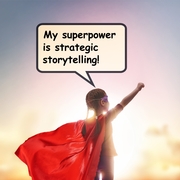Teen Pregnancy Prevention: Sharing Success Stories
By Marcia Quackenbush, MS, MFT, MCHES | April 7, 2017
Senior Editor, ETR
Teen pregnancy rates are down. A wide range of statistics and figures show this. If you work in the field of adolescent health, you’ve certainly already heard this news.
Think for a moment about how you hold that information in your mind. Perhaps you remember the rate of births per 1,000 females aged 15-19 years. You might think about a national map that shows state rankings in teen birth rates. Maybe colorful bar graphs or pie charts come to mind.
Do You Have a Story About That?
But, because you are a human, there is an excellent chance that you’ve integrated this information into some sort of story. You’re aware of the impact this trend has on the young people in your family, your students or youth clients. You might remember a specific young person who made choices to avoid pregnancy. You might have someone in mind who experienced a teen pregnancy.
Human brains are hardwired to respond to stories. Stories allow us to remember information. They can make complex information more accessible. They can even guide us to greater success and happiness.
Last week the Office of Adolescent Health (OAH) hosted a meeting of grantees in the OAH Teen Pregnancy Prevention Program. The focus of the meeting was strategic storytelling. It offered grantees skills to help them gather and share stories about their programs’ successes. The goal? To communicate stories that “stick” when meeting with funders or other stakeholders.
The TPP programs are being formally evaluated. There will be plenty of data suitable for tables and pie charts. These evaluations are necessary and essential for examining the program impact. But the human heart (or, better stated, the human brain) wants a story to tie the facts together.
Stories Make Data “Real”
The participants in this meeting are a dedicated group of youth advocates. I was struck by how genuine and sincere their stories are. They tell them with respect for young people’s strengths and a commitment to listen to what young people tell us about their lives.
One program coordinator told me about a high school student whose two younger sisters had already had children. This girl knew exactly what the challenges would be for her and her family if she became pregnant. She wanted children, and she knew she didn’t want them while she was in school. She chose to become pregnant after she graduated high school.
A coordinator from another program described a 14-year-old who wanted to talk with her mother about sex but hesitated because her mother was “very conservative and won’t talk about anything but abstinence.” The program staff helped the girl formulate some questions she could ask her mom about the family’s values and her mom’s own experiences as a teen. This girl’s mother might not be able to be exactly who the girl wanted her to be at that moment. But the student agreed that keeping the channels of communication open could strengthen her connection with her mom and keep them close.
What’s Your Story?
What story do you hold in your mind when you think about reductions in teen pregnancy and births? I think of a girl I knew whose slightly older sister—a powerful and much loved role model—had had two pregnancies by the time she turned 20. The younger sister chose to become sexually active in her late teen years, but only after she had started using a contraceptive. She went on to college and a successful career—some of it focused on teen pregnancy prevention!
I’m hoping we’ll all tell more of these stories, whatever our areas of focus. When we shine light on the human narratives behind our evaluation outcomes, we can have a greater impact on everyone who hears about our work.
Marcia Quackenbush, MS, MFT, MCHES, is Senior Editor at ETR. She can be reached at quam@etr.org.





